What is a Food Stylist?
You may be familiar with the term food stylist, but what does it mean? In this article, we will explore the role of a food stylist, what they do, and how to become one — all described by a professional food stylist.
Casey Bumpsteed
loading...

What is a Food Stylist?
So, what is a food stylist? Here, I cover what a food stylist is (and isn't), the key deliverables in this career, plus how to become a food stylist.
My name is Casey Bumpsteed. I'm a qualified Cordon Bleu chef with a background in food styling, food photography, and writing. My career spans around 25 years, and I'm excited to share my thoughts, suggestions, and general knowledge to answer the questions, “What is a food stylist?” and “What does a food stylist do?”
What a Food Stylist Is and Isn't
The world of food and how food is visually consumed have drastically changed over the last twenty years. Following this path of change, the role and perception of what a food stylist is and does have changed, too, naturally.
Before discussing what a food stylist is/does, I'd like to highlight that the #1 goal of food styling is to balance art and science, or magic and logic, to be more poetic, in arranging food to make it look delicious.
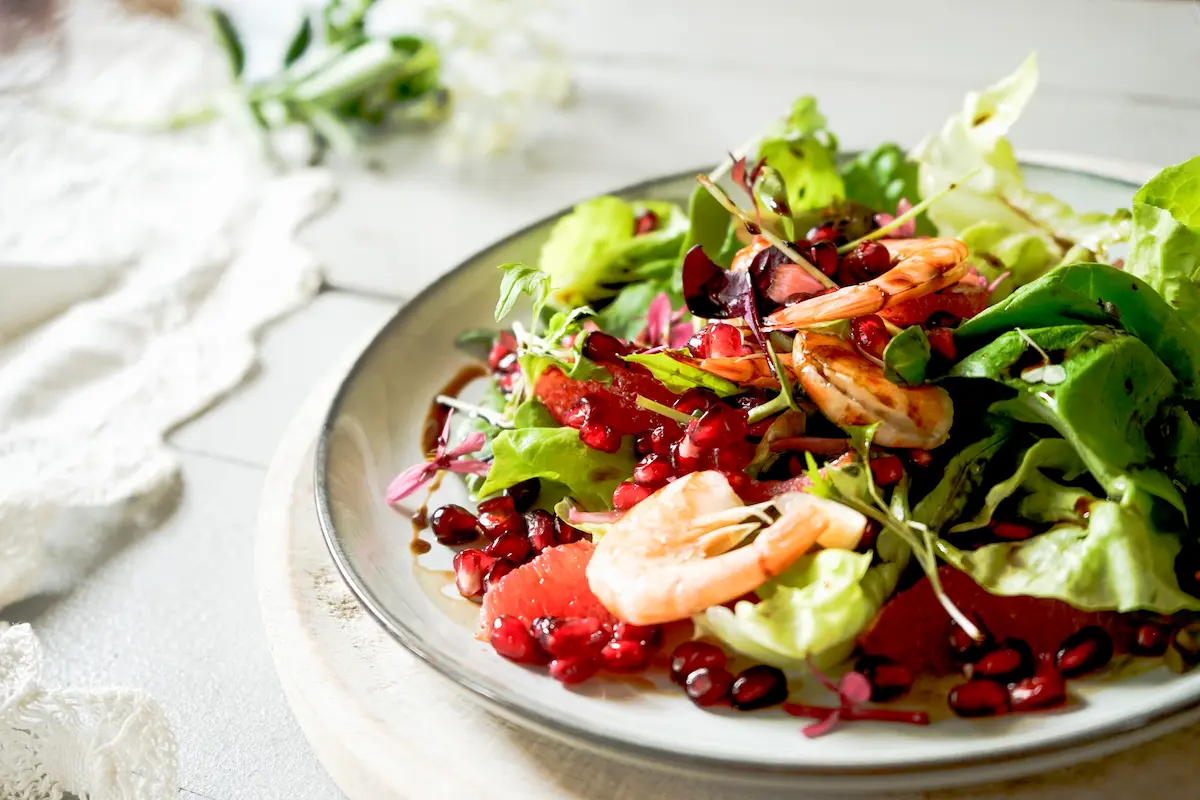
Food styling and photo courtesy of the author
Second, food styling, from a commercial perspective, works to highlight the “hero” on the plate. What I mean by “hero” is the key component, feature, or benefit of the plate of food. For example, if Hellmann's hires a food stylist to style a burger featuring their mayonnaise, the mayonnaise needs to be visible and complement the juicy-looking hamburger patty.
The food stylist needs to ensure that the hamburger looks juicy, golden, and delicious so that the audience associates the mayonnaise with an incredible hamburger-eating experience.
What Does a Food Stylist Do?
There are the 3 main responsibilities of a food stylist:
Aesthetics:
Getting a balance of composition, colour and texture in the shot, as a partner to the photographer.
Prop sourcing:
In preparation for a shoot, prop sourcing should reflect the colour scheme, theme, etc. Beyond the food, the set needs to be prepared, and this is a key part of food styling. Prop sourcing includes backgrounds, linens, crockery, and cutlery, and any other décor elements included in the shot.
Cooking and plating:
In some instances, food styling will include cooking and plating the food. In other instances, where large teams are involved, for example, a commercial food shoot for McDonald's, there might be a separate chef and food stylist. In this case, the stylist will receive the cooked/prepared item from the chef and take it from there to style and set the food item on the set, add anything needed to accentuate the food for the camera.
In today's world, we think about food styling in two areas: professional or commercial food styling and food styling for small businesses.
I'm going to dive deeper here to share my understanding:
What is a Food Stylist - Professional/Commercial Setting
Traditionally, in the commercial food space, a food stylist works to cook (not always), garnish, plate and compose the setup of a shot.
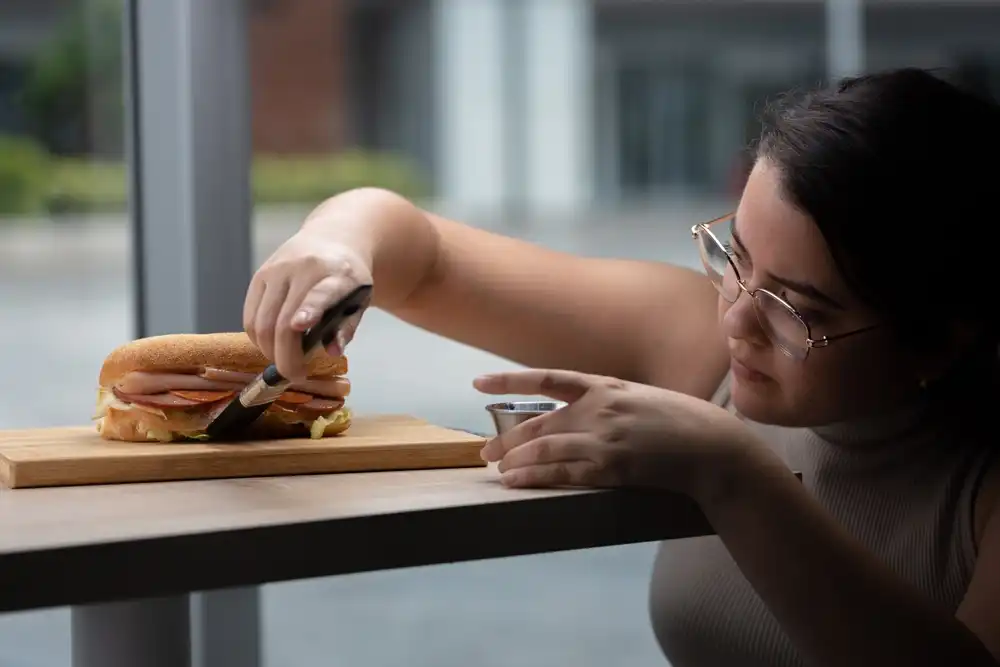
The types of food styling applications here include:
• Cookbooks and magazines
• Social media, marketing and sales material, and blogs for large companies, food retailers, chains, and food product manufacturers
• Packaging and advertisements
• TV shows, movies, and commercials
• Restaurant menus and websites
• Social media and blogs for big companies
• In-person food presentations and demonstrations
On a set for a shoot where a food retailer, restaurant, or food product/manufacturer has hired a team to create photos or videos, there would be the following players:
1. The end client – this can be 1 to up to 10 people (yikes) – and often involves people in marketing, R&D (Research and Technical Development), and possibly sales.
2. The advertising agency – usually a food stylist is hired either by the account manager from the Ad agency leading the artwork production. There might be 1 or more people on set from this team, as they hold the brief and are hyper-concerned with delivering on the brief. There is usually an art director who leads this team and directs the production.
3. Photographers and/or videographer and their assistants.
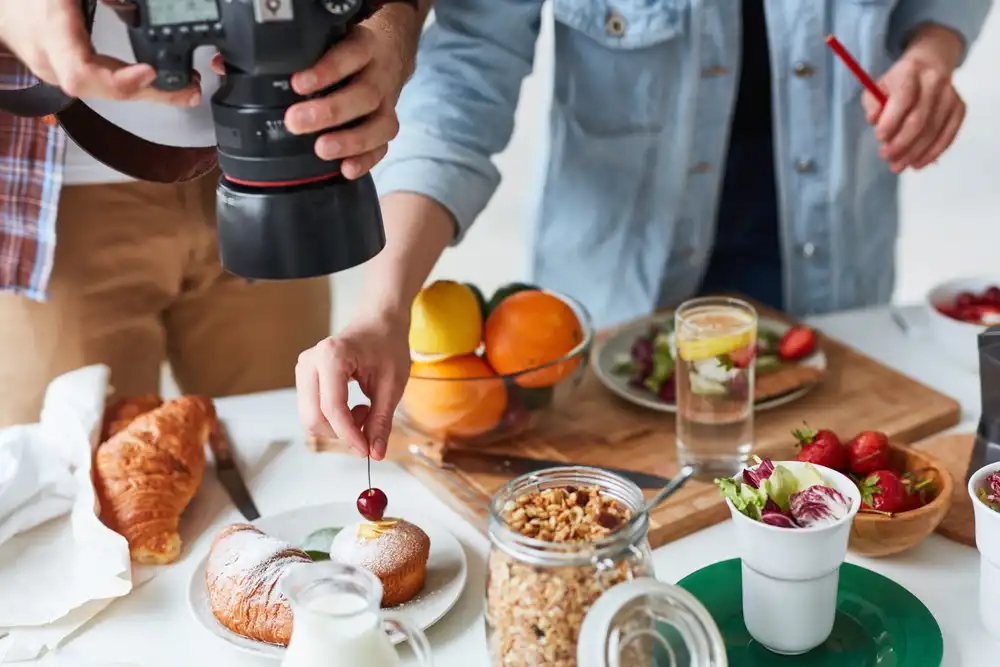
4. The food stylist – and possibly an assistant, depending on the shoot size.
5. The chef – Sometimes, but not always, the end client will have a chef from their business who is familiar with the products being shot, who comes and cooks the food for the shoot.
The key relationships and communication look like this:
End client and advertising agency – they have agreed on the desired outcome, the production, and the brief for the production team.
The ad agency, photographers, and/or videographers and food stylists – they will usually have a pre-production meeting to align on the look, feel, angles, and application of the images so they can have the right props, equipment, garnishes, etc, ready for the day.
On the day, the chef, food stylist, and video/photographer have to be tight as they will need to follow a tight schedule to achieve all the artwork needed.
Honestly, it's a pretty high-pressure environment – more on that later.
There can be technical tricks needed on these sets. Here are a few I've had to use:
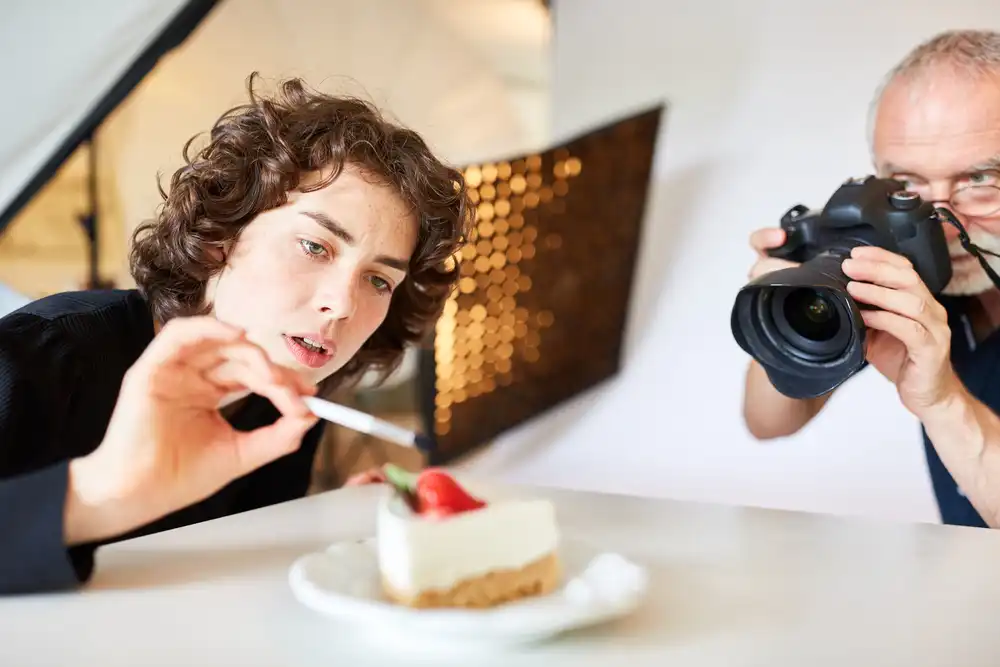
What is a Food Stylist - Smaller Scale
In 2025, a food stylist can and does sometimes refer to someone who cooks and styles dishes and food for social media and blog content. Stylists sometimes take the photos, too. They are often self-taught, and their food is more natural-looking.
The types of food styling applications here include:
• Social media posts
• Blog posts and website content
What a Food Stylist is Not
A food stylist is not always a chef. Having said that, professional training has a huge advantage in the professional space, versus someone who is self-taught. In my case, my chef-training gave me a big advantage in this space, as I was easily hired for my cooking skills.
A food stylist can be a chef, but a chef can't automatically be a food stylist. This is because a food stylist needs training and an understanding of composition beyond the plate; they need to create artistry through the composition of the food, plating, and setting beyond the plate.
A food stylist doesn't just make food look pretty. I needed to master using toothpicks to prop food up, dry ice, glue, glycerine, and so many more techniques to create illusions in the shot.
A professional food stylist is not a photographer. Having said that, some, including myself, have learned basic photography. Remember – the stylist builds the visual, the photographer concerns him/herself with the lighting, angles and taking the shot.
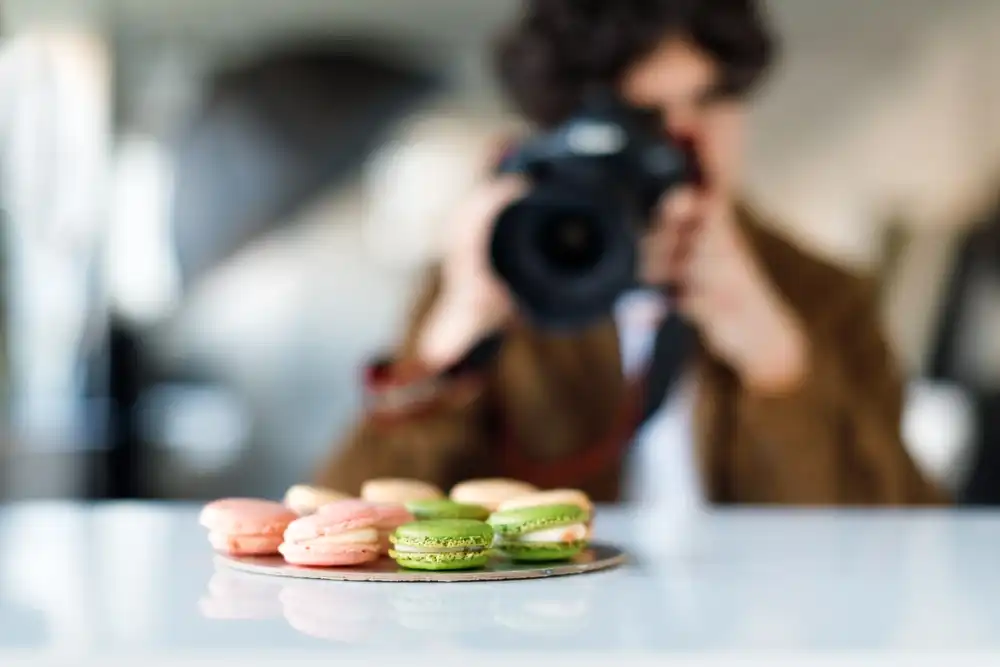
My Journey to Becoming a Food Stylist
There was never one period of time when I worked as a food stylist. I've worked on and off in this space since around 2004.
Soon after qualifying and getting married, I was working in a restaurant in Cape Town. My then-husband was one of the most prominent chefs in South Africa and was often asked to create recipes to feature in magazines (this is pre-social media mania when we all bought food magazines and printed cookbooks and spent hours leafing through them). I would join him on set for these shoots, and this is where I began my learning.
How to Become a Professional Food Stylist
There isn't one way to become a commercial or professional food stylist, certainly in my experience. Because it's such a hands-on type career, I feel that working as an assistant to a successful food stylist is a great way to learn.
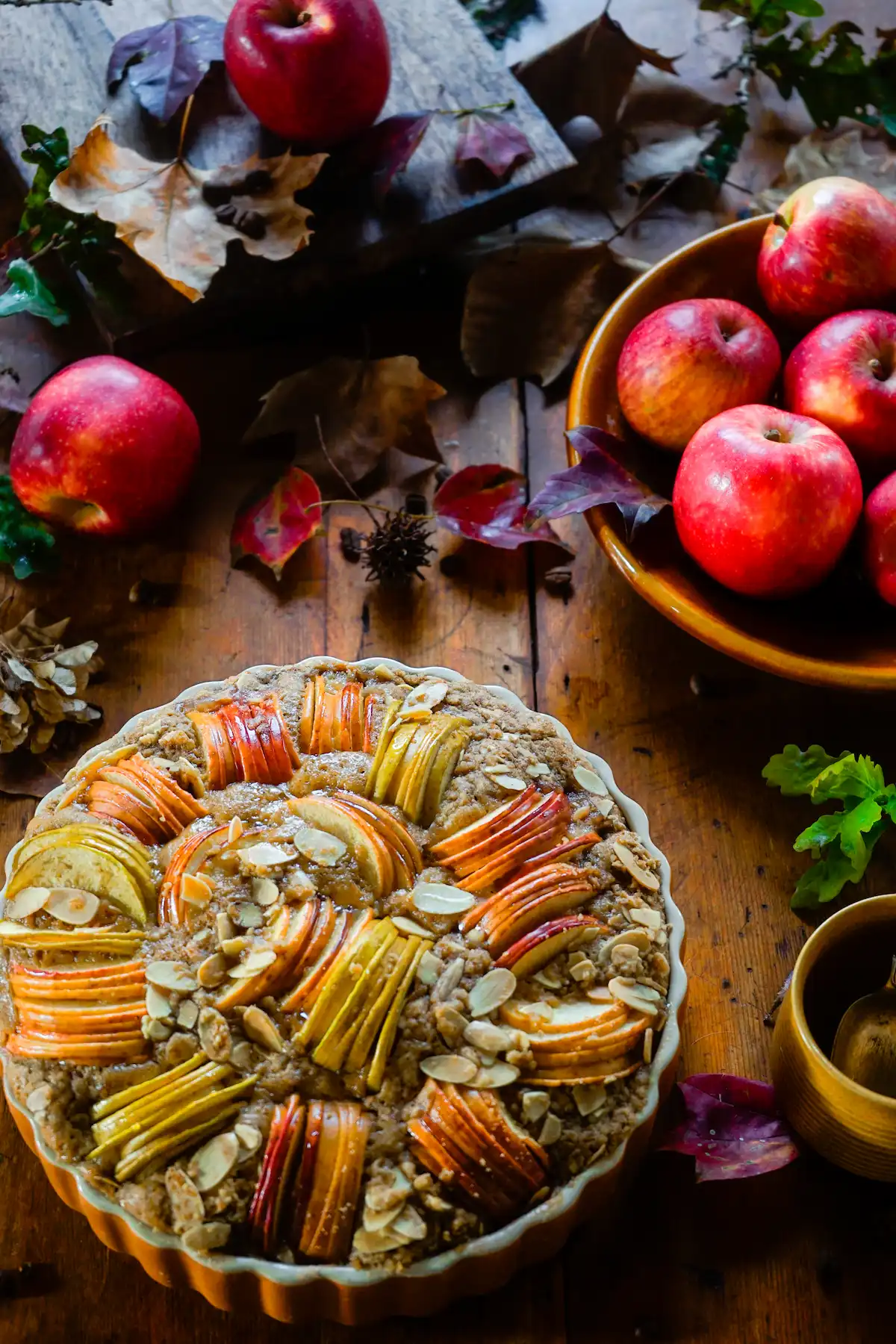
Food styling and photo courtesy of the author
This type of “apprenticeship” will give you a taste for the high-pressure environment of a food shoot and set.
I really recommend this route because of the following:
• Real-life experience you can add to your CV (more commonly known as a “resume” in the United States) and portfolio – while you might not have been the lead stylist, you can add the brands and clients' names to your CV as an assistant stylist.
• You'll get paid – and not terribly either!
• All the experience of a real shoot without all the pressure on your shoulders.
If this isn't an option for you, you could take some great online courses.
What Would be Rewarding to Someone Pursuing the Craft
Speaking from my own experience, this is what I loved about food styling:
• Personally, I like to be my own boss and run my own freelance business – food styling, aside from catering weddings, etc, gave me this freedom.
• I love that food styling combines beautifully plated and presented food with décor and prop styling – it really ticked all my creative boxes.
• It pays really well. When I was working as a food stylist, I could work 3 days a week and make the same as I'd make as a full-time chef or caterer.
• It has a “work from home” setup – for moms or dads who want to be more available for their kids, or if you just love working from home, this is a great career option.
• Every project and client is different, and each project is like a mini challenge.
• I travelled domestically quite a bit as a food stylist, which was fun.
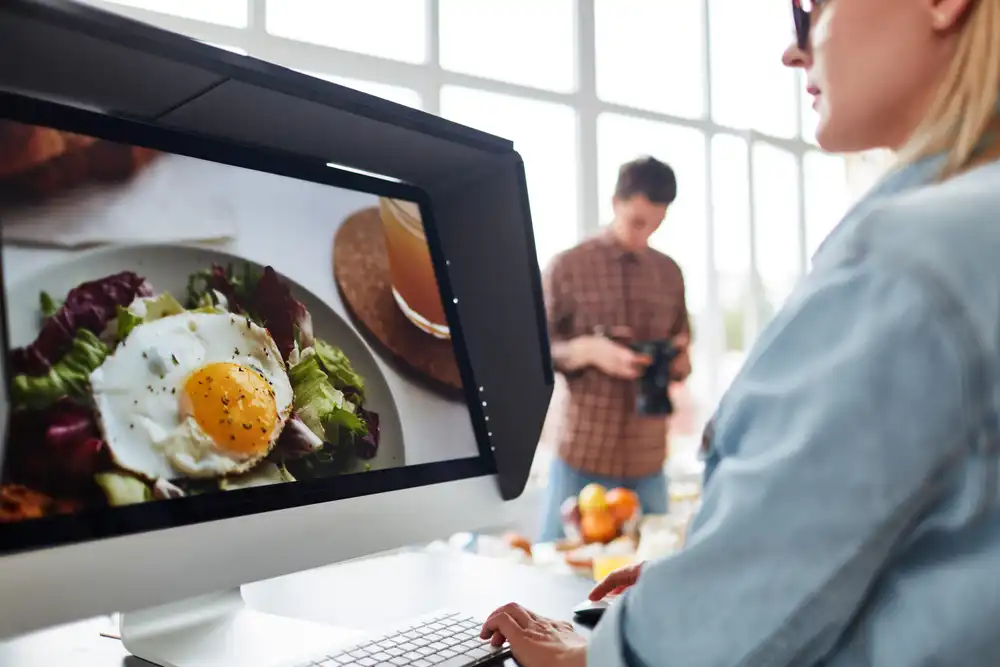
What Would Be Challenges To Someone Pursuing the Craft
There wasn't much I didn't love about food styling, but here are a few things some might struggle with:
• The pressure is real, my friends. For me, food styling on a set was way more pressurised than working in any kitchen or catering a wedding.
• Growing your business can take time, and if networking is a struggle for you, it might start slowly.
• You need to cart and carry a lot of stuff around—on average, I would have 4 boxes of props per shoot, and these were often really heavy. There's a fair amount of cleaning up and packing up involved.
How to Become a Food Stylist (What are the Paths?)
To summarise, here are a few possible paths to becoming a food stylist. I should maybe note here that food stylists mostly freelance. It's not a typical “employed” career.
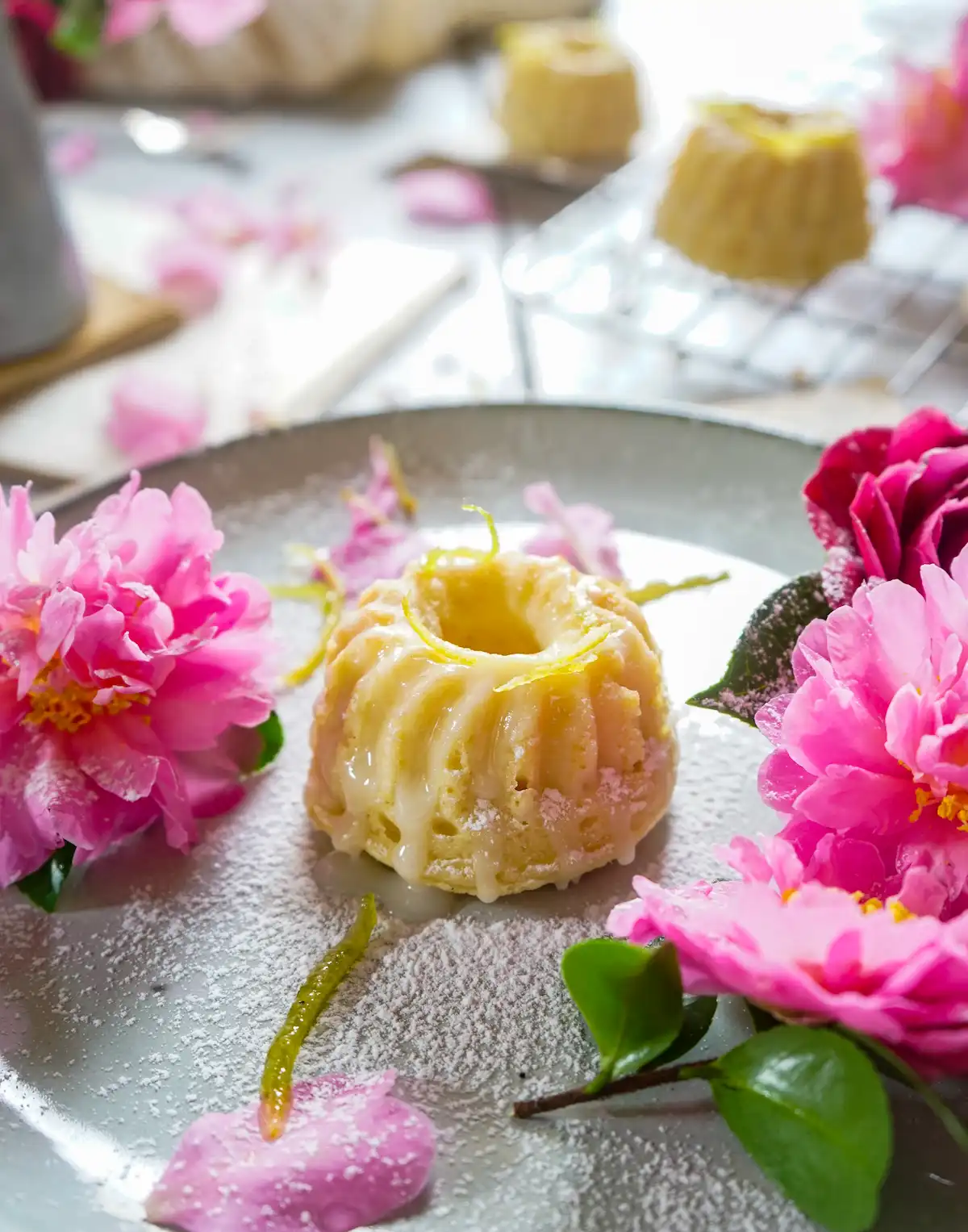
Food styling and photo courtesy of the author
1. Become a chef – read my article here about my path to becoming a chef and whether I think culinary school is necessary. Once you've gained experience for a year or two, you'll be ready to work as an assistant to an established stylist. You don't have to be a chef to become a food stylist, but it absolutely will give you an advantage, and a big one. Many clients (most of them, actually) expect the stylist to prep and cook the food, so having a grip on all culinary terms and methods is super helpful.
2. Go to art/design school and learn cooking skills on the side – take an online course on food styling and practise your skills regularly.
How Long Do People Last in a Career as a Food Stylist?
Is it high pressure like working in a professional kitchen where it is hard on the body, long in hours, and possibly difficult to achieve a work/life balance?
Personally, I found it a high-pressure environment because the client is often breathing over your neck/shoulder while you are cooking, composing, and plating the food. At least when cooking in a restaurant kitchen, you can cook and plate without the customer right there!
Food styling is hard on the body, and I suggest you take on a fitness and strength-building routine if you decide to pursue this career. I would give the same advice to aspiring chefs, too. There is a lot of packaging, lifting props, and carrying heavy boxes involved.
Additionally, you will stand and work bent over a lot of the time. It's amazing how many overhead shots are taken with a backdrop that's laid out on the floor. I've even plated and styled a hamburger while lying on my belly!
What Type of Personalities and Skills Suit Food Styling?
Loads of personality types and skills work well as a food stylist. Here's a list I feel would be really helpful if you are considering this career path, aside from being able to work with food, which goes without saying:
Personality/Qualities/Skills
• Detail-oriented: For shoots offsite, you will need to take everything—every prop, garnish, and tool. You need to be a detail-oriented person.
• Conceptual thinker: The ability to take a brief from a client and then imagine the finished product ahead of time.
• Composition: This is where an art class or background can really help – while the photographer is there to set up the shot, it's key to understand the different shapes and compositions involved in creating balance.
• Colour theory: Here again, art class helps! I used to carry around a little colour key wheel with me! You'll need to understand which colours work well together in both the food and props.
• Communicative: You should be able to confidently discuss a brief, request information to cover any gaps etc and communicate in a timely manner.
• Interested in trends : Knowing trends in the décor and food world is key!
• Work well under pressure: This includes being flexible to adjust to changes in deadlines, venues, the brief, etc.
Wrapping Up
Whether you're introverted or outgoing, collaborative or prefer to work alone, this career works for everyone because there are large parts of the project where you will work alone and other parts where you'll need to collaborate. I would say it's better suited to introverts than working as a chef in a kitchen with a big team, though.
If you are considering becoming a food stylist, I can honestly say it is the most phenomenal career, in my experience. Food styling has been my favourite of all the roles I've fulfilled in the food space.
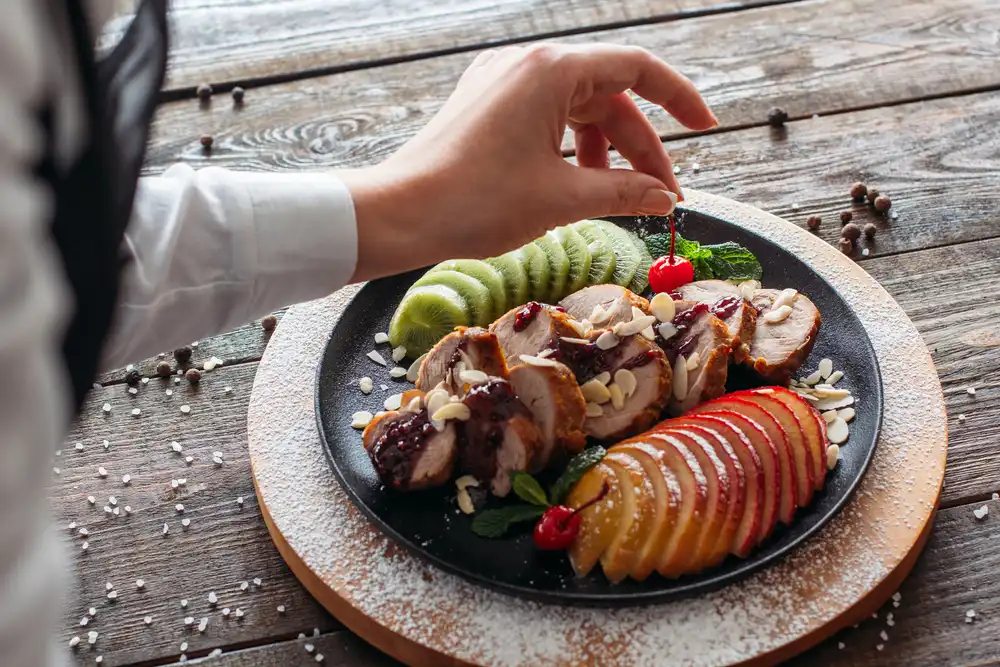
The perfect balance of logic and magic, art and planning – it's a great career if you love project-based work that is exciting and ever-changing. I hope this article covered some of your queries around what is a food stylist and how to become a food stylist.
©2025 Cocina Digital Hospitality Group, Inc. All rights reserved.
No part of this publication may be reproduced, stored in a retrieval system, or transmitted in any form or by any means, electronic, mechanical, photocopying, recording, or otherwise, without the prior written permission of the publisher.
We use cookies to enable you to use our site, understand how you use our site, and improve your overall experience.
Cookies allow us to personalize content, track which pages are most popular and least popular, and provide advertising that may be relevant to you.
Please note that cookies that are essential to the proper functioning of the site are required and cannot be disabled.
They are usually only set in response to actions made by you which amount to remembering your settings, a request for services, such as setting your privacy preferences, logging in, or filling in forms.
As such, they are the only cookies that are enabled by default.
You can set your browser to block or alert you about these cookies.
By continuing to use our site, you accept our use of cookies.